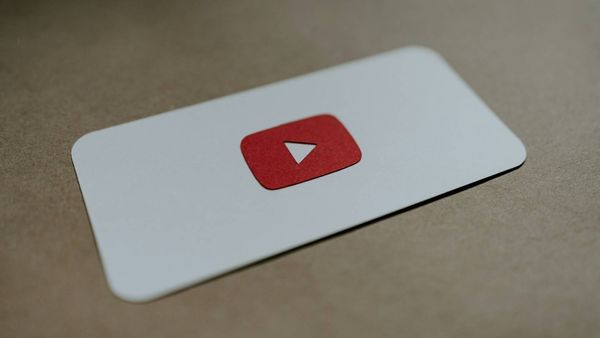YouTube Tag Generator
What YouTube tags are (and what they’re not)!
YouTube tags are metadata terms that help YouTube understand your video’s context, especially for misspellings, synonyms, or ambiguous titles. They don’t replace a clear title, an engaging description, chapters, or strong CTR/retention. Think of tags as supportive metadata that can:
- Clarify the topic behind brand or model names
- Catch common typos and variations your audience uses
- Add intent words like tutorial, review, guide, tips, setup, troubleshooting
If your title and description already do the heavy lifting, tags act as extra signposts. Used well, they make discovery more consistent across spelling variants and phrasing differences.
How the YouTube Tag Generator works
Your generator focuses on the strongest words and phrases in the title and creates controlled variations that are actually useful:
- Pulls out key phrases from the title, including multi-word brand or model names
- Generates practical variants like tutorial, guide, review, tips, setup, troubleshooting, how to
- Handles hyphen/space joins and light singular/plural forms
- Outputs a clean, comma-separated list with a trailing comma so you can paste it into YouTube in one go
The UI is intentionally minimal: Title → Generate → tags appear in a simple box → Copy. It’s wide on desktop, fits the screen on mobile, and doesn’t interfere with your site’s global styles.
Step-by-step: generate solid tags in under a minute
- Paste your exact video title.
- Choose the number of tags (start with 15–25 for most videos).
- Click Generate.
- Scan the box under the button. Remove anything that feels off-topic.
- Click Copy to grab the comma-separated list and paste into your video’s Tags field.
Tip: If your title is quirky or branded, keep it as is; the generator will still pull the right entities and add meaningful variations.
Best practices for YouTube tags in 2025
Quality over quantity
Aim for 10–25 precise tags. More than 30 often adds repetition without meaning.
Mirror viewer language
Pair brand or model names with intent words your audience uses: how to, tutorial, review, setup, tips.
Stay close to the title’s promise
If your title says iPhone 15 Pro camera test, tags like camera test, camera comparison, low light test are aligned; adding unrelated features (battery life) weakens relevance.
Use long-tail patterns
Combine entity + intent:
- iphone 15 pro camera test
- iphone 15 pro camera review
- iphone 15 pro camera tips
- how to use iphone 15 pro camera
Handle variants and spacing
For things like After-Effects, MacBook-Air, RTX-4070, consider both hyphen and space forms: after effects, after-effects; macbook air, macbook-air; rtx 4070, rtx-4070.
Don’t stuff tags with the entire title
Your title already exists; use tags to cover close variations and search language, not to repeat the exact line verbatim.
Real examples you can copy
Tech unboxing:
Title: iPhone 15 Pro Camera Test: Low-Light, Zoom, and Stabilization
Sample tags:
iphone 15 pro camera test, iphone 15 pro camera review, iphone 15 pro camera tips, iphone 15 pro low light test, iphone 15 pro stabilization, iphone 15 pro zoom test, how to use iphone 15 pro camera, camera comparison iphone 15 pro, iphone 15 pro video settings, iphone 15 pro cinematic video,
Cooking recipe:
Title: 15-Minute Creamy Garlic Pasta (No Heavy Cream)
Sample tags:
garlic pasta recipe, creamy garlic pasta, easy pasta recipe, 15 minute dinner, weeknight pasta, how to make garlic pasta, no heavy cream pasta, quick pasta recipe, stovetop pasta, pasta cooking tips,
Travel vlog:
Title: 48 Hours in Lisbon: Food, Tram 28, and Sunset at Miradouros
Sample tags:
lisbon travel guide, lisbon itinerary 2 days, tram 28 lisbon, miradouros sunset, lisbon food tour, things to do in lisbon, weekend in lisbon, portugal travel tips, alfama walking tour, best views lisbon,
Programming tutorial:
Title: Pandas Merge Explained: Inner, Left, Right, Outer Joins
Sample tags:
pandas merge tutorial, pandas join types, inner join pandas, left join pandas, right join pandas, outer join pandas, pandas merge explained, how to merge dataframes, python pandas tips, data analysis pandas,
Fitness at home:
Title: 20-Minute No-Equipment HIIT for Fat Loss
Sample tags:
hiit workout at home, no equipment hiit, 20 minute hiit, fat loss workout, cardio hiit routine, beginner hiit, full body hiit, home workout plan, hiit intervals, weight loss workout,
These examples show the balance you’re aiming for: entity + intent, compact phrasing, and close alignment to the title’s promise.
How many tags should you use?
- New channels: 20–25 to capture phrasing variance while you learn how your audience searches
- Established channels with consistent titles: 10–18 is usually enough
- Niche topics: fewer, more exact tags are better than broad generic terms
Hashtags vs. tags: which goes where?
Hashtags live in your description or title and appear as clickable links on video pages. Tags live in the Tags field in YouTube Studio and are not visible to viewers. Use both, but don’t duplicate the exact same list; think of hashtags for discovery on the video page and tags for metadata alignment behind the scenes.
Troubleshooting common issues
Tags look repetitive
Reduce duplicates. Keep one form per idea: iphone 15 pro camera test or camera test iphone 15 pro, not both, unless the word order really reflects distinct search habits.
Your title is vague
If a title is too clever to be descriptive, add a clear description and a stronger first sentence. The generator can still help, but the core metadata should set expectations.
Niche jargon or product codes
If your title includes a code name or internal shorthand, keep it. Add the plain-language equivalent to tags so viewers who don’t know the code can still find you.
A quick workflow you can standardize
- Draft your title first.
- Use the generator to produce 15–25 tags.
- Remove anything that doesn’t match the video’s actual content.
- Paste tags in YouTube Studio.
- Add 2–3 smart hashtags to your description, focusing on the same entity + intent structure.
- Publish and watch search terms in your analytics over time to learn which variants your audience actually uses.
FAQs
Do tags still matter?
They’re supportive metadata. Title, description, thumbnail, chapters, and audience retention remain the primary performance drivers. Tags help with spelling variants and extra context.
What’s the ideal tag length?
Most tags should be three to five words. Short single-word tags are fine for core entities (iphone, pandas), but rely mainly on compact phrases that reflect real searches.
Should I include competitors in tags?
Avoid tagging other creators or brands unless they are clearly part of your video. Relevance beats reach.
Can I reuse the same tag set across a series?
Yes, but always include episode-specific variations so each video can rank for its unique angle.
Conclusion
A good tag set is compact, relevant, and close to the language people use when they search. Your YouTube Tag Generator makes that process quick: take the title, produce aligned variations, and paste a clean, comma-separated list in seconds. Use the examples above as templates, iterate based on analytics, and keep your tags tightly mapped to the promise your title makes.
If you want, I can add an optional field that lets you predefine focus keywords to guide the generator on tricky titles.





